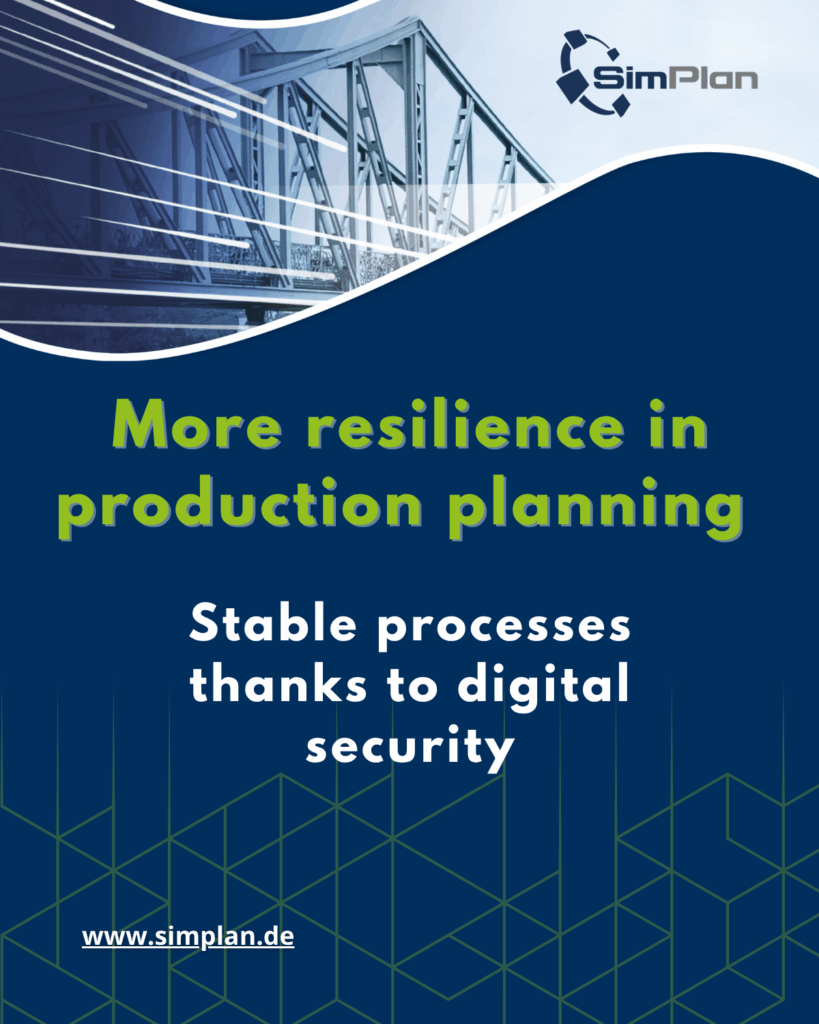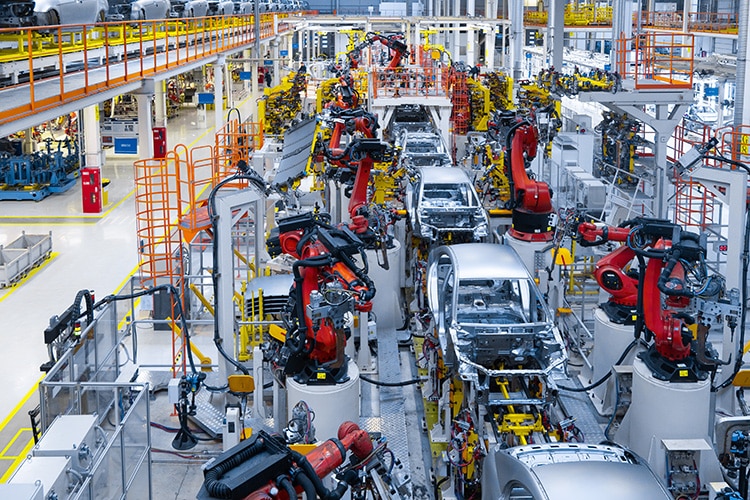How simulation leads to more stable processes
Production planning usually focuses on efficiency. But in a volatile industrial environment, that is no longer enough. Sudden material shortages, shift cancellations or changes in customer requirements quickly push many production systems to their limits.
Resilient production planning means being prepared for such events without maintaining permanent overcapacity. One key to this is digital simulation.
What is missing without simulation?
Many planning managers use Excel, ERP evaluations or empirical values. These tools are well suited for the ‘target’, but not for the ‘what if’.
- What happens if material arrives an hour late?
- How does an additional order affect throughput?
- Where is the critical point at which the plan fails?
Without simulation, answers to these questions are often only estimates. The result: operational chaos, adjustments ‘on the fly’ and suboptimal decisions.
Seven ways simulation can make your production planning more robust
Identify bottlenecks early
Simulation shows where processes can become unstable, for example due to uneven cycle times, limited buffers or machine overload. In traditional planning, such bottlenecks often only become apparent during operation. Simulation makes them visible in advance and allows them to be specifically mitigated.
Compare scenarios realistically
Whether it’s a changed shift model, additional orders or alternative sequences: simulation allows you to systematically run through variants, including interactions and real process times. This creates a reliable basis for decision-making and prevents plan changes from being based on assumptions.
Plan buffer quantities correctly
Too little buffer jeopardises process stability, too much unnecessarily ties up space, capital and personnel. Simulation helps to place buffers where they really have an effect, based on throughput, susceptibility to disruption and utilisation. This leads to more economical and, at the same time, more robust planning.
Factoring in delivery delays
Material delays are one of the most common causes of plan deviations. Digital models show which processes are sensitive to such delays and where alternative supply strategies or reallocations can provide relief. This allows risks to be mitigated at an early stage.
Designing secure product launches
New products often entail changes to processes, parts lists or set-up sequences. Simulation reveals the impact these changes have on existing processes, resources and time windows. This allows the launch to be structured without placing unnecessary strain on existing processes.
Intelligent maintenance planning
Maintenance is part of everyday life, but if it is poorly timed, it can quickly become a bottleneck. Simulation allows you to identify early on when maintenance has the least impact and which time slots are suitable for it in the overall process. This prevents surprises and improves planning.
Consider personnel deployment as a factor
Not only technology, but also human resources influence process stability. Simulation helps to analyse how qualifications, shift availability or personnel bottlenecks affect the process and which measures provide the necessary flexibility. This strengthens resilience in day-to-day business.
Plan more robustly with simulation
Simulation is more than just an analysis tool; it is a strategic lever for resilient production planning. Testing complex processes virtually at an early stage enables you to make better decisions and remain capable of acting even in critical situations.
This is a clear competitive advantage, especially in times of uncertain markets and increasing complexity.
Contact
Would you like to learn more about how simulation can be used in your production? Our team is available for a non-binding consultation or web meeting.




